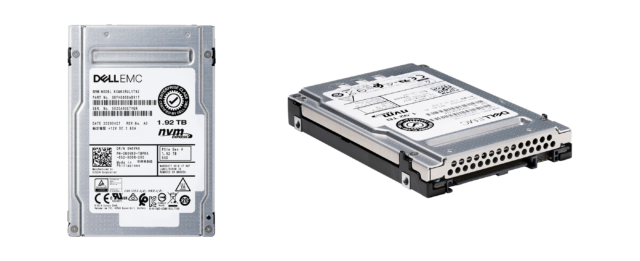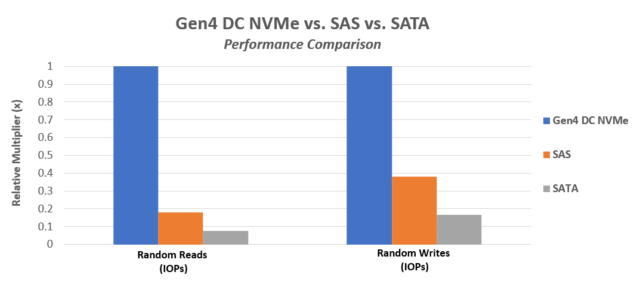Is it Time to Transition Exclusively to NVMe?
- December 17, 2021
The NVMe host controller interface has made a lot of noise since its inception less than a decade ago. It introduced new forward-looking concepts to the storage market that were undeniably valuable, such as non-volatile memory and the high-speed PCIe bus. These design implementations made NVMe technology ideal for high performance data processing and large amounts of stored data – a perfect reason for bigger enterprise businesses to adopt the superior technology, even with its premium price point. It didn’t take long to catch on, as businesses understood that the world of data is rapidly evolving and wanted to stay ahead of the curve. NVMe storage was globally accepted as the premium storage solution.
However, what was once a novel technology had become conventional within a matter of years. Any business working with large data knew that NVMe storage was the best solution for increased speeds, reliability and security. It was also built to grow alongside developing technology rather than fall behind it, as SAS and SATA have been for some time. This shift inclined suppliers to create more competitively priced NVMe models for budget-conscious customers also wishing to transition over. Soon enough, the NVMe interface was a viable offering for everyone.
Fast-forward to today; there is a new solution that is both high-performance and affordable, with a price-point approaching even SATA. This new solution is the PCIe Gen4 Data Center (DC) NVMe drive, and its existence warrants an important discussion – is it time to start transitioning completely to NVMe?

To determine our answer, we must analyze the two most valuable metrics for comparing PCIe Gen4 DC NVMe, SAS and SATA – performance and pricing. Figure 2 provides a transparent illustration of how NVMe, SAS and SATA random read and write performances stack up against one another:

This bar graph portrays random read and write performances for 3.84TB Gen4 DC NVMe, SAS and SATA drive capacities. When the average Gen4 DC NVMe performance has a relative baseline of 1.0x, we can see very clearly that the average performance of the other two storage interfaces falls short. PCIe Gen4 DC NVMe drives actually outperform the competitors by a longshot for every metric, with a performance increase multiplier ranging from:
In regard to pricing, making comparisons can be tricky to accurately discuss as prices are always shifting. Therefore, we will determine relative pricing percentages for vendor-agnostic models from the Dell Technologies Q4 2021 price list. For this exercise, if PCIe Gen4 DC NVMe drives have a baseline price of 1.0x, then for the same capacity we can expect an average price multiplier of:
Based off of this performance and pricing data we can conclude with 100% certainty that there is no benefit in choosing SAS over PCIe Gen4 DC NVMe, as it is both more expensive and has much lower performance.
All that is left to determine is if there is any unique value proposition for SATA that would warrant a customer to purchase it over PCIe Gen4 DC NVMe. We have already determined that PCIe Gen4 DC NVMe has significantly greater performance than SATA. However, we have also determined that PCIe Gen4 DC NVMe is slightly more expensive than SATA.
To find out how SATA compares to Gen4 DC NVMe at the price-per-performance level, we hope you will read the full paper.